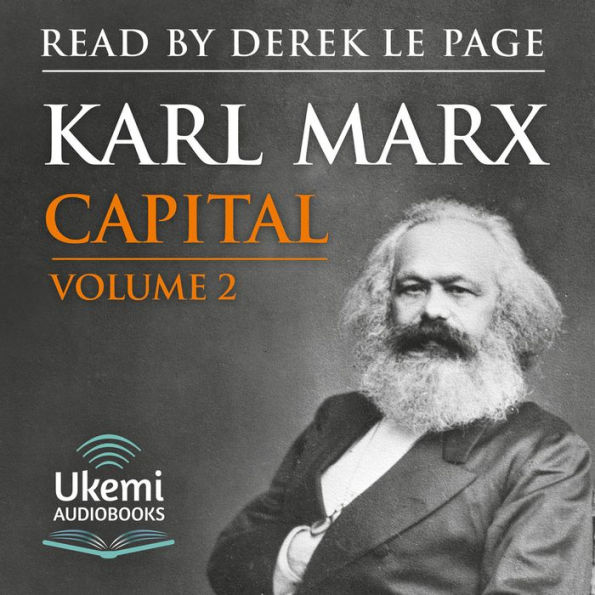It was the close friendship and professional association between Karl Marx and Friedrich Engels that enabled Marx's full vision presented in Capital: A Critique of Political Economy to come to fruition.
Following Marx's death in 1883, Engels was able to step into the breach and, drawing on Marx's extensive notes and writings, complete volume 2 of Capital, leading to its publication in 1885. Here, Marx turns his attention to the money owner, the money lender, the wholesale merchant, the trader and the entrepreneur or 'functioning capitalist.'
The work is divided into three parts: 'The Metamorphosis of Capital and Their Circuits'; 'The Turnover of Capital'; and finally 'The Reproduction and Circulation of the Aggregate Social Capital'. Though more theoretical and perhaps thus more challenging than volume 1, Marx's intentions in volume 2 were clear: `We investigate...the social intertwining of different capitals, of the component parts of capital and of revenue.' By looking at the `movement of commodities and of money', Marx was able to clarify the patterns involved in the capitalist mode of production.
This is clear in the subtitle of volume 2: The Process of Circulation of Capital.
Translation: Samuel Moore and Edward Aveling.
"1102328654"
Following Marx's death in 1883, Engels was able to step into the breach and, drawing on Marx's extensive notes and writings, complete volume 2 of Capital, leading to its publication in 1885. Here, Marx turns his attention to the money owner, the money lender, the wholesale merchant, the trader and the entrepreneur or 'functioning capitalist.'
The work is divided into three parts: 'The Metamorphosis of Capital and Their Circuits'; 'The Turnover of Capital'; and finally 'The Reproduction and Circulation of the Aggregate Social Capital'. Though more theoretical and perhaps thus more challenging than volume 1, Marx's intentions in volume 2 were clear: `We investigate...the social intertwining of different capitals, of the component parts of capital and of revenue.' By looking at the `movement of commodities and of money', Marx was able to clarify the patterns involved in the capitalist mode of production.
This is clear in the subtitle of volume 2: The Process of Circulation of Capital.
Translation: Samuel Moore and Edward Aveling.
Capital: Volume 2: A Critique of Political Economy
It was the close friendship and professional association between Karl Marx and Friedrich Engels that enabled Marx's full vision presented in Capital: A Critique of Political Economy to come to fruition.
Following Marx's death in 1883, Engels was able to step into the breach and, drawing on Marx's extensive notes and writings, complete volume 2 of Capital, leading to its publication in 1885. Here, Marx turns his attention to the money owner, the money lender, the wholesale merchant, the trader and the entrepreneur or 'functioning capitalist.'
The work is divided into three parts: 'The Metamorphosis of Capital and Their Circuits'; 'The Turnover of Capital'; and finally 'The Reproduction and Circulation of the Aggregate Social Capital'. Though more theoretical and perhaps thus more challenging than volume 1, Marx's intentions in volume 2 were clear: `We investigate...the social intertwining of different capitals, of the component parts of capital and of revenue.' By looking at the `movement of commodities and of money', Marx was able to clarify the patterns involved in the capitalist mode of production.
This is clear in the subtitle of volume 2: The Process of Circulation of Capital.
Translation: Samuel Moore and Edward Aveling.
Following Marx's death in 1883, Engels was able to step into the breach and, drawing on Marx's extensive notes and writings, complete volume 2 of Capital, leading to its publication in 1885. Here, Marx turns his attention to the money owner, the money lender, the wholesale merchant, the trader and the entrepreneur or 'functioning capitalist.'
The work is divided into three parts: 'The Metamorphosis of Capital and Their Circuits'; 'The Turnover of Capital'; and finally 'The Reproduction and Circulation of the Aggregate Social Capital'. Though more theoretical and perhaps thus more challenging than volume 1, Marx's intentions in volume 2 were clear: `We investigate...the social intertwining of different capitals, of the component parts of capital and of revenue.' By looking at the `movement of commodities and of money', Marx was able to clarify the patterns involved in the capitalist mode of production.
This is clear in the subtitle of volume 2: The Process of Circulation of Capital.
Translation: Samuel Moore and Edward Aveling.
27.16
In Stock
5
1

Capital: Volume 2: A Critique of Political Economy

Capital: Volume 2: A Critique of Political Economy
FREE
with a B&N Audiobooks Subscription
Or Pay
$27.16
27.16
In Stock

Product Details
| BN ID: | 2940159185372 |
|---|---|
| Publisher: | Ukemi Audiobooks from W. F. Howes Ltd |
| Publication date: | 06/01/2018 |
| Edition description: | Unabridged |
Videos

From the B&N Reads Blog
